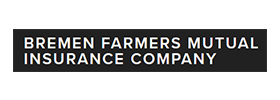When it comes to auto insurance, you have options. Nearly every state in the USA has mandatory auto insurance, and of those states there’s a certain kind of auto insurance you are required to buy. You may be eligible, depending on your record, to purchase insurance add-ons to further customize your coverage, such as comprehensive and collision. Some consumers opt for what’s known as “full car coverage” – but what is that, really?
What is full car coverage?
To break it down briefly, full car coverage doesn’t actually exist. There’s no way to buy auto insurance coverage that fully insures your vehicle against every potential risk out there. Full car coverage generally refers to an automobile owner who drives a vehicle that is insured with collision, comprehensive, and liability coverage. Insurance companies may also offer additional protection, such as coverage for rental cars or even ticket forgiveness.
While it’s not “full car coverage” in the sense that it insures against every possible risk, it’s the fullest available car coverage there is. So, when you see the term “full car coverage,” this is actually referring to the combination of insurance coverages designed to protect a driver financially for damages done to their vehicle, the passengers or occupants of that vehicle, and any other individuals involved in the accident.
*Key takeaway here: there is no definition for full coverage auto insurance. Your best bet is to work with an agent to determine what options give you the fullest, most attainable peace-of-mind.
What are all the coverages included in full car coverage?
While the definition of full coverage may differ from insurer to insurer, here are the coverages you may expect to have included in a “full car coverage” plan:
Liability Insurance
If you are in your vehicle and get into an accident, this coverage helps pay for the damages and injuries. It is required in virtually every state in the USA, with the exception of New Hampshire. Certain states will mandate certain levels of coverage, usually between $200,000 and $1 million. Most insurers offer the option to increase your coverage.
Uninsured or Underinsured Motorist Insurance
In states where it’s mandatory to have insurance, some drivers still opt to go without. If you get into an accident with an uninsured driver, or perhaps a driver who flees the scene, this coverage will protect you from the damages to your vehicle, or even medical expenses you incur in the accident.
Personal Injury Protection (PIP)
Depending on the state, PIP or personal injury protection may be mandatory to protect you from the cost of medical expenses for you or others in your vehicle. Some types of PIP can include coverage for lost wages and other expenses for injuries in an accident.
Collision Insurance
Collision insurance is optional and may be purchased to increase your coverage to protect against damages done to your vehicle in an accident, even if you were responsible. It may also protect against damage to your vehicle if you hit something stationary or if your vehicle rolls over.
Comprehensive Insurance
Comprehensive coverage is optional as well and insures your vehicle against damages due to things other than accidents, specifically when your vehicle is not moving. An example of this is if a tree falls on your vehicle in a storm or if someone breaks your window attempting to steal something in your car.
With some optional coverages, specifically collision and comprehensive, a deductible will apply. This means that to have a claim paid out, you’ll need to pay your deductible amount towards the repairs before your insurance company pays for the remainder.
Other auto insurance options
Depending on your state and your insurer, you may be eligible for additional insurance options to help further “round out” your policy. Some examples include:
- Gap Insurance: Aka loan or lease payoff insurance, this insurance helps to pay for the gap left on what you owe for your vehicle if it’s wrecked in an accident.
- Car Rental Coverage: This insurance option offers car rental reimbursement, as rental shops will often offer insurance, but at a very high price with very minimal coverage.
- Towing and Roadside Assistance: Some insurers will automatically offer this coverage, where for others it’s an option to include it. Roadside assistance coverage, to cover the costs of towing and changing flat tires, can be a great asset to have.
- Glass Breakage: Glass damage regularly falls under comprehensive coverage, but if you have a high deductible that could wipe out any glass coverage you’d get. With full coverage, you might have the option to get better protection for glass coverage with no deductible (but a slightly higher premium).
Ask an agent about these coverages for more information, or for more suggestions on what to include to have fuller car insurance.
Should I have full car insurance coverage?
In no situation is full car coverage beyond the state mandatory technically required, although certain coverages may be asked of you if you’re lending or leasing a car. Otherwise, optional coverages are entirely up to your preference.
We would recommend considering additional protections, specifically collision and comprehensive, especially if you don’t have enough money saved to cover yourself in the event of an accident. You are best off purchasing coverage which addresses the biggest likelihoods. Note that having a low deductible may result in high premiums, so if you want to save on your premiums you’ll choose a lower deductible.
Talk with an agent if you aren’t sure. A representative from AHI can help you decide on what options are best suited to your needs, what makes the most sense, and what’s the most affordable. Call us today!























